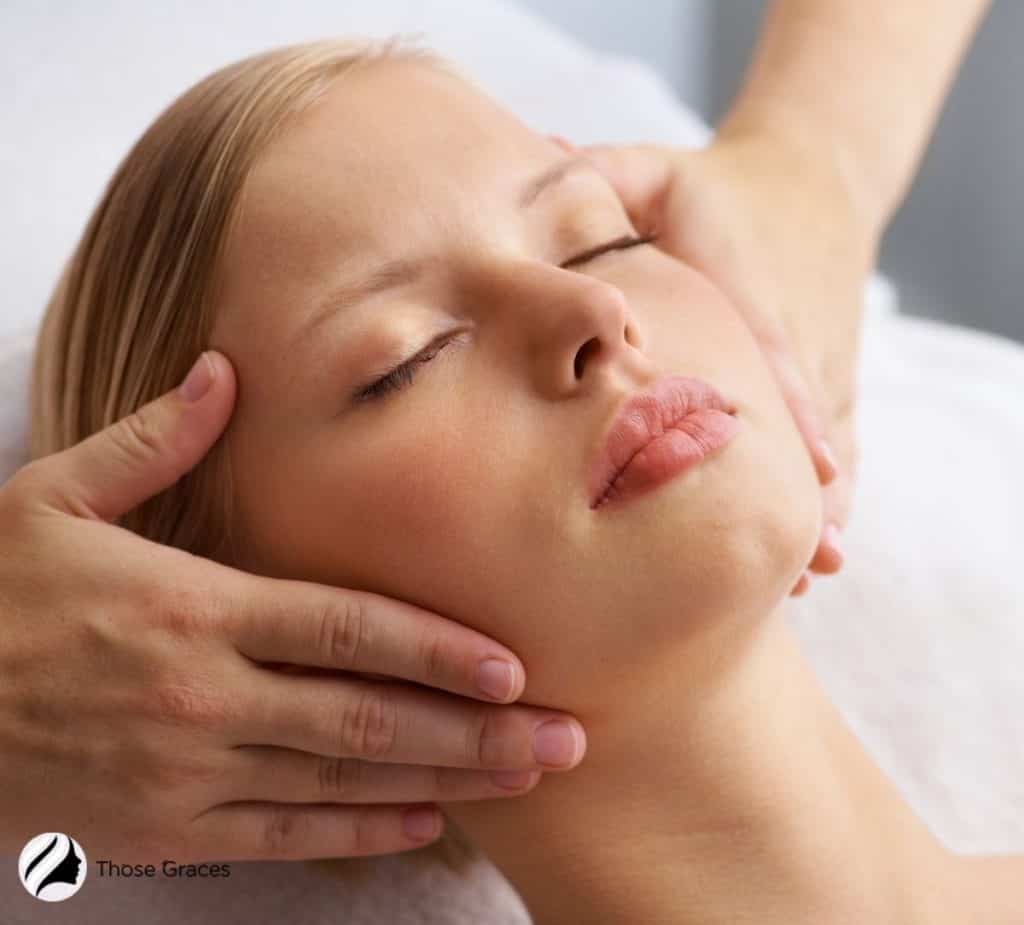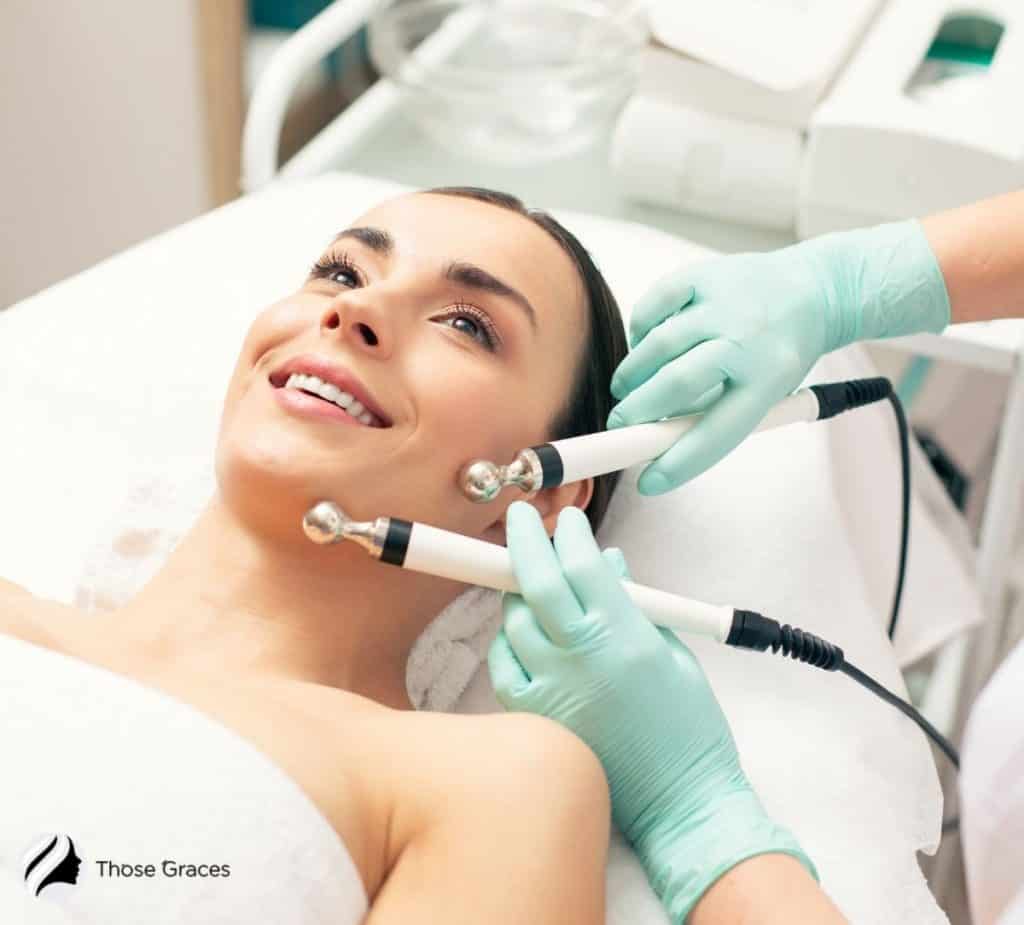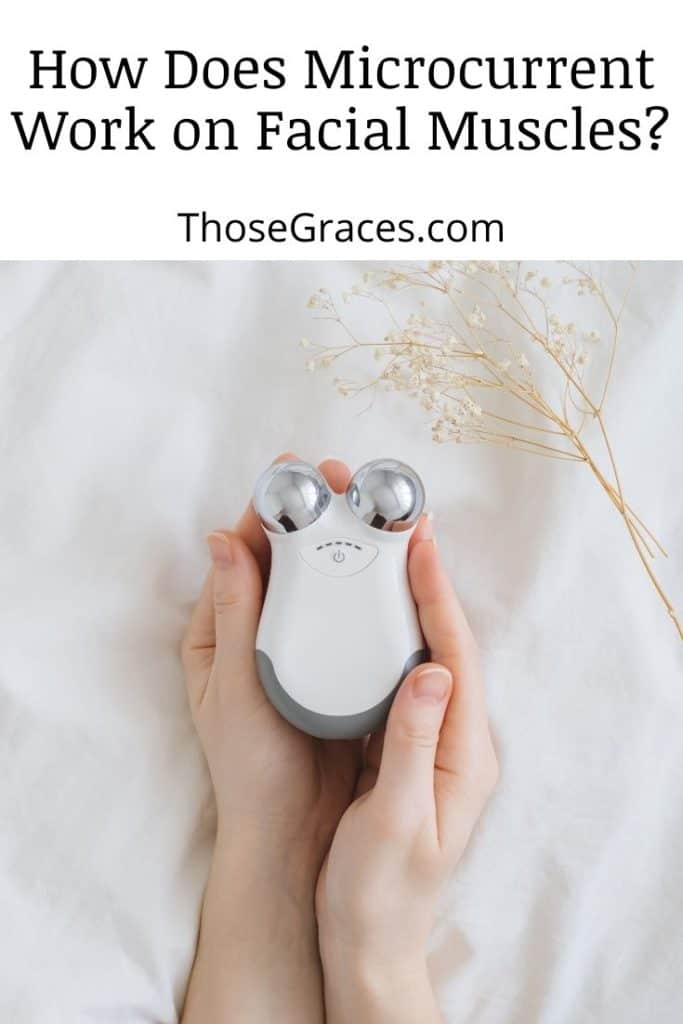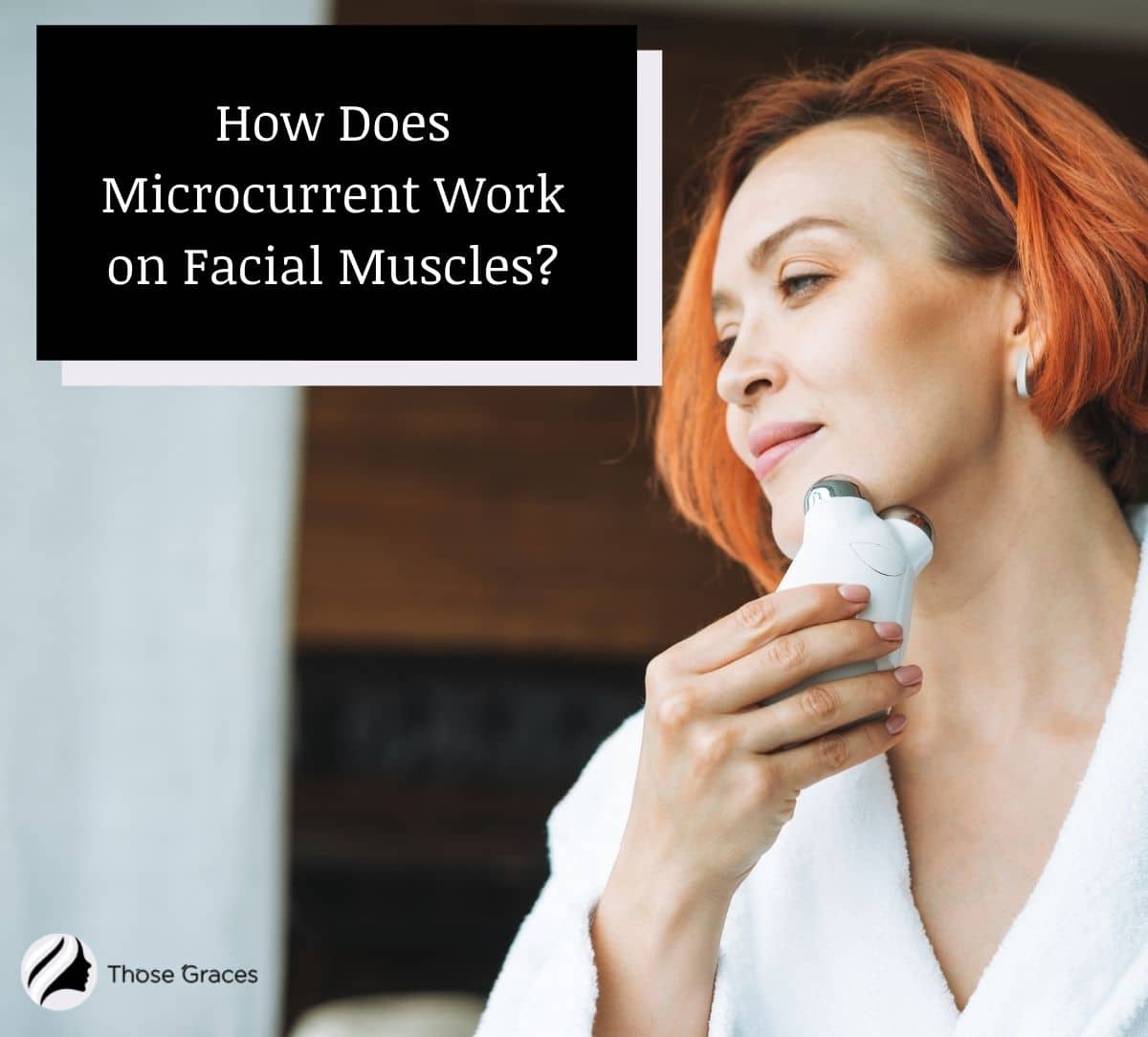Curious about how microcurrent works on your facial muscles?
I’ve got you!
First, we’ll talk about what those muscles are (don’t worry, I’ll keep it simple, this isn’t a biology class, after all).
Then, we’ll dive into how the trendy skin treatment works on them!
Don’t forget to check our list of the best microcurrent device!
Table of Contents
What Are the Facial Muscles?
Okay, so bear with me. I know I promised to keep it simple and not turn this into an anatomy class, but at the same time, I do want to give you a good overview. 🙂

Facial muscles are what’s known as “striated” skeletal muscles, because of their striped appearance.
There are about 20 of them in all, and each one plays an important role either on its own or along with others.
Biologically, they are subdivided into broadly two categories based on their origin, namely, mimetic muscles and mastication muscles.
The mimetic muscles are responsible for your facial expressions (I remember it by thinking about mimes having really exaggerated expressions). The mastication muscles are for chewing.
What Are the Functions of Facial Muscles?
When it comes to the muscles of the face and their functions, it is pretty straightforward. Basically, there are two major functions of our facial muscles. These are,
Chewing
The act of chewing is scientifically called mastication. I know, it’s not my favorite word, either. A total number of five facial muscles work in tandem to facilitate the mastication process.
Buccinator muscles are muscles that are responsible for clasping both of your cheeks towards the teeth.
Colgate (yep, the toothpaste) has the best “in simple terms” explanation for them: these muscles keep you from constantly biting your cheek. They also help you smile!
Lateral Pterygoid muscles are responsible for helping you open your jaw. Without them, we couldn’t so much as talk, let alone eat!
The function of the Masseter, Temporalis, and Medial Pterygoid muscles is the opposite of the Lateral Pterygoid muscles. Literally. They allow us to close our mouths and move our jaw from side to side.
Creating Facial Expressions
There are a number of facial muscles for facial expressions. For example, if you are wondering ‘what muscles do you use when you smile?’, it is called Risorius.
These are situated on both sides of the mouth. Another example is the Corrugator Supercilii that is responsible for creating a frowning effect on the eyebrows.
Oh, and that old adage about how it takes more muscles to smile than to frown? Well, it turns out that no one is really sure about that.
According to Tom Scheve of How Stuff Works, it really depends on so many factors, including why you’re smiling or frowning and how deeply you’re doing so.
But he does have a semi-answer to the burning question. He writes, “
“Counted individually (as you might count your biceps to be two different muscles, instead of one muscle pair), we reach a tally that very well may turn our understanding of the universe completely on end: 10 muscles to smile, and six muscles to frown.”
READ MORE: Lumina NRG Reviews
Okay, so that’s about enough of the anatomy class portion of this post. Let’s find out how microcurrent works on those muscles!
How Does Microcurrent Work on Facial Muscles?

In the pursuit of anti-aging skin, skin and the cosmetic industry have undoubtedly come up with innovative measures.
In recent times, microcurrent has been internationally accepted as the go-to technique to achieve the younger-looking skin you’re craving for.
In order to stimulate the rate of skin cell growth, the microcurrent technique uses electricity to literally shock your muscles.
Even though this sounds harsh, it is completely non-invasive, and painless. The procedure is pretty simple and injection-free too.
A microcurrent procedure is steered to create a natural lift of the facial muscles. This is done by stimulating the muscles as well as the production of collagen that effectively tightens the skin.
Even though it uses electricity, it is of very low, skin-friendly voltage that induces ATP cell growth of the dermis of the skin.
Below is a great tutorial video:
RECOMMENDED: How to Make Conductive Adhesive Gel?
How Can We Identify Muscles Need Shortening Or Lengthening?
Each facial muscle either shortens or lengthens with age.
Two examples of facial muscles that need shortening are first, Orbicularis oculi which are responsible for lifting and tightening eyelids and under the eye, and secondly, Depressor Anguli Oris which facilitates the lifting of the nasal folds to the side of the mouth and nose.
Two examples of facial muscles that need lengthening are first, Frontalis muscle which is located on your forehead since it creates forehead wrinkles, and secondly, Obicularis Oris which is located around the lips and is key in creating lip lines.
As for how to determine which of YOURS need shortening or lengthening, there’s no magical “do this at home” answer. Your doctor or dermatologist is the only one who can give you the right answer.
Check: The Best Skin Scrubber Spatula
Why Should We Use Microcurrent for Lifting?
There are many reasons that can be attributed to using microcurrents for lifting. Some of these are as follows.
Increase In ATP Production
Mitochondria are the cell organelles that are commonly known as the powerhouse of the cell. Why?
Because these are the sites that are responsible for the production of a protein molecule called Adenosine Triphosphate or ATP. ATPs are the molecules that provide energy for any cellular process to function.
So, the microcurrent procedure is aimed at synthetically increasing the production of ATP production which plays a key role in the production of collagen and elastin.
This, in turn, helps in tightening the skin with a rejuvenated look.

Increase In Collagen Production
Collagen is the primary protein that prevents the face from sagging. It acts as the building block of bones, muscles, ligaments, etc.
Collagen is a very important protein for the health of your face since it also keeps the skin elastic to lessen wrinkles.
It also acts as a protective molecule to clear out debris or dead skin cells.
Since there is an elevated production of ATP as a result of microcurrent treatment, naturally, there will be an elevated production of collagen. The skin will eventually lose out on the sagging substantially.
Increased Elasticity of the Skin
With increased production of ATP, Collagen as well as Elastin protein, the cumulative effect is often quite impressive.
Elastin helps in retracting the skin to its original structure after being flexed. Increased flexibility of the skin due to elastin will help the skin structure to be maintained without damage.
FAQs
What are the major facial muscles?
Are facial muscles attached to the skin?
What are the deep muscles of the face?
Conclusion
I hope that answers your questions about facial muscles and microcurrents without making you feel too much like you were back in science class.
If you’re interested in trying out microcurrent therapy, talk to your doctor.
References:
- 0. 2019. “Is This 5-Min Microcurrent Facial Better than Botox?” Healthline. Healthline Media. June 26, 2019. https://www.healthline.com/health/beauty-skin-care/microcurrent-facial#how-does-it-work.
- Colgate. 2021. “What Is the Buccinator Muscle?” Colgate.com. Colgate. November 9, 2021. https://www.colgate.com/en-us/oral-health/mouth-and-teeth-anatomy/what-is-the-buccinator-muscle.
- https://www.howstuffworks.com/about-author.htm. 2009. “How Many Muscles Does It Take to Smile?” HowStuffWorks. June 2, 2009. https://science.howstuffworks.com/life/inside-the-mind/emotions/muscles-smile.htm.
- “Muscles of Facial Expression.” 2013. Kenhub. 2013. https://www.kenhub.com/en/library/anatomy/the-facial-muscles.
- Westbrook, Katherine E, Trevor A Nessel, Marc H Hohman, and Matthew Varacallo. 2021. “Anatomy, Head and Neck, Facial Muscles.” Nih.gov. StatPearls Publishing. September 25, 2021. https://www.ncbi.nlm.nih.gov/books/NBK493209/.

What do you think of microcurrent for facial muscles? Let us know your opinion in the comments below!



